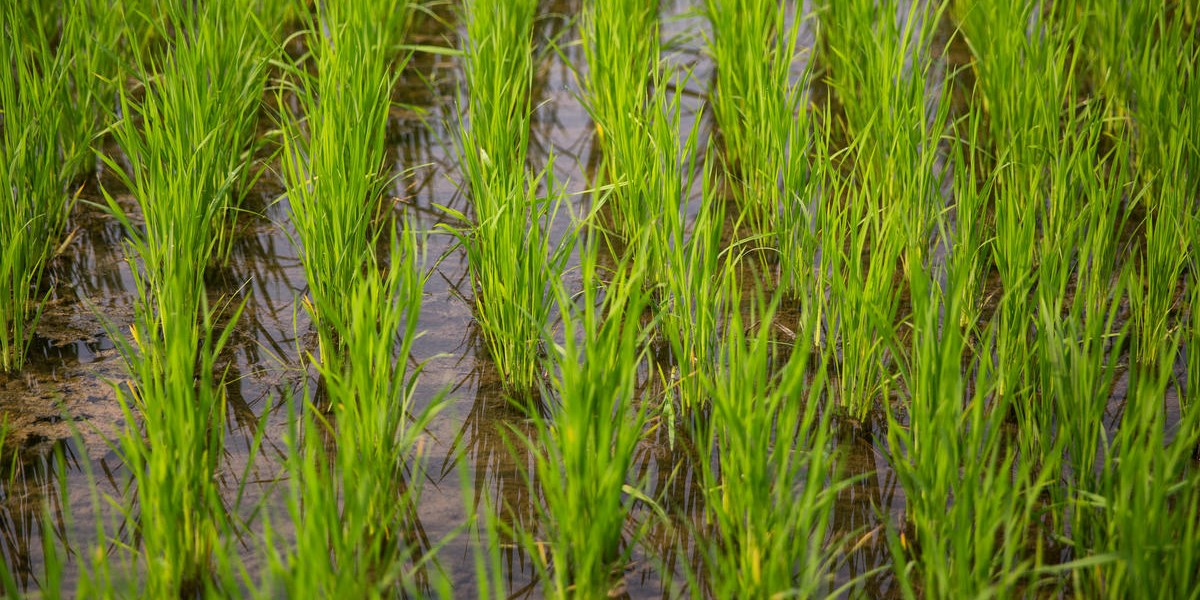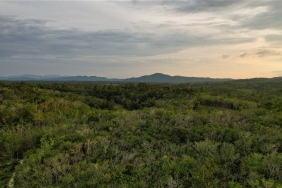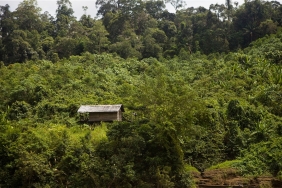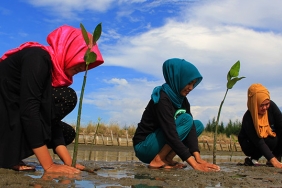"SLOW FOOD": INDIGENOUS CULINARY SENSATIONS AS AN EXPRESSION OF LIFESTYLE, CULTURE AND TRADITIONAL WISDOM
Cristina Eghenter assists WWF Indonesia as a Social & Development issue expert in the field of conservation and sustainable development. The anthropologist and community empowerment practitioner has a deep impression of Kalimantan. She spent many years on the island conducting research and surveys for her PhD program in ethnohistory and human relations with Natural Resources.Profile...
By Cristina Eghenter
On April 1, 2011, after the inauguration of the Cultural Field School (CFS), the group of guests headed to the New Light location where a lunch was prepared for the invitees and the community, at the GKII church. It turned out that the food was already served in many large pots and containers on four tables in one corner of the church building. It wasn't until I got a closer look that I realized that all the food was local and made from ingredients indigenous to the Krayan highlands.
There were even some foods that were very "unique" and quite "foreign." For example, there was one type of food that was round like a large black candy decorated with white lines. It looked very pretty and piqued my curiosity to taste it. It turned out to be a type of mushroom that grows in the fields in certain seasons, with a delicious flavor and soft texture.
The culinary offerings that afternoon included local Krayan varieties of black and red rice, several types of porridge (called "biter" in the local language), an assortment of buffalo meat, fish, snails and honeybee chicks. In addition, many types of vegetables are also cooked ranging from rattan and palm yam, to sweet potatoes, red and green ferns, and other forest plants.
After savoring the plentiful and delicious meal while being serenaded by the melodious voices of a choir of women from Long Umung, I felt that the cuisine served that day was truly rich in "new" and "antique" flavors. Yes, antique because it was the cuisine of indigenous people from a long time ago.
Lunch that day became an extraordinary experience full of flavor "adventures" and enjoyment, an authentic Krayan culinary sensation that certainly cannot be obtained or felt elsewhere. The food also has extra value because it expresses the local wisdom of the indigenous people and their knowledge of utilizing the wealth of plants and plants around them.
I am reminded of a social movement called the "slow food movement," an initiative in Europe (originally from Italy) that wants to preserve traditional foods from every region and ethnic tribe around the world, valuing local varieties that can only grow in certain areas. Because they are grown in a specific area, they have a distinctive flavor thanks to the water, soil, seeds, cultivation methods and practices, and the air.
Slow food is not just a food initiative. The most important value of this initiative is to preserve the value of regional cuisine that comes from natural resources and plants native to the region, which are processed and processed based on the traditions of its own people. Cuisine is an expression of culture and local wisdom in relation to humans and the surrounding environment. Therefore, traditional cuisine should be preserved and promoted, and its raw materials should be protected by recognizing IPR (Intellectual Property Rights) and geographical indications (GI).
The name of the movement "Slow food" certainly has a main target as well, which is to stem the shackles of "fast food" (McDonald's, Burger King, Kentucky Fried Chicken, etc.) which is 'global' (not local) food where the value of traditional ingredients and wisdom is no longer there, and often the public does not even know where the food ingredients come from.
The lunch experience at Terang Baru was a "slow food" experience in the highlands of the Heart of Borneo. It is appropriate for local communities to promote this cultural aspect in order to encourage the development of ecotourism in their area. One way to do this is by offering a local menu (local cuisine) to tourists. Tourists will be fascinated by the fresh, unique flavors and natural spices that characterize the cuisine in forest areas.
In Indonesia, there is a growing awareness that what we choose to eat also has an impact on the environment and our planet. Consumption styles in the city such as choosing organic and eco-friendly products, appreciating traditional cuisine, encouraging the consumption of locally available products without the need to import from afar at a very high cost and carbon are some examples of concrete steps to help the local economy and environmental sustainability.




